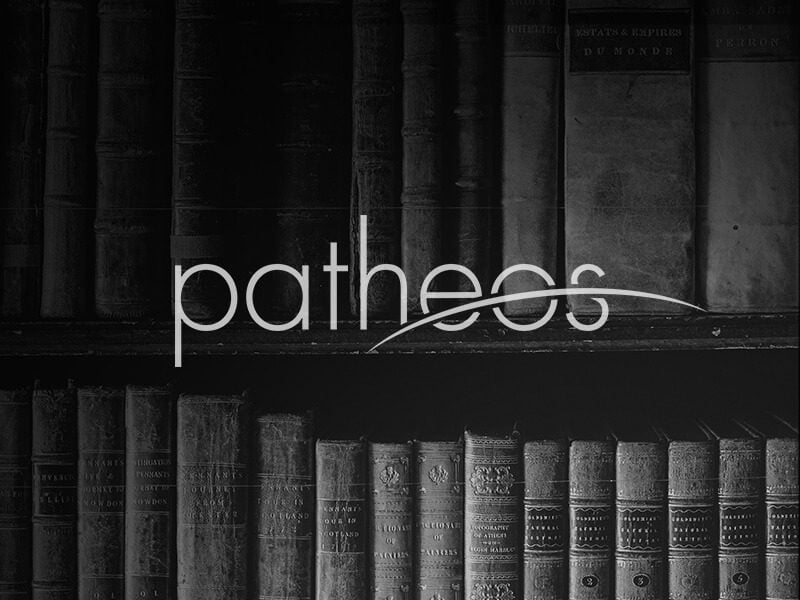 I’m blogging from Malaysia, where I just spent a couple of days meeting with leaders and members of an indigenous Christian community. The people with whom I’ve been conversing are members of an ethnolinguistic group that has been resident in peninsular Malaysia for tens of thousands of years, living dominantly in upland jungle as hunters and gatherers or swidden farmers.
I’m blogging from Malaysia, where I just spent a couple of days meeting with leaders and members of an indigenous Christian community. The people with whom I’ve been conversing are members of an ethnolinguistic group that has been resident in peninsular Malaysia for tens of thousands of years, living dominantly in upland jungle as hunters and gatherers or swidden farmers.
Like many indigenous peoples in rapidly developing countries their lifestyle, culture, and society has been under threat by encroachment on their traditional lands for decades. Where the precipitous mountains and dense jungle make agricultural development impossible logging has taken its toll. Indeed in the 25 years since I first met these people most have become completely sedentary, gradually adapting to life in the small towns closest to their original villages.
Virtually all are fluent in the national language although only a minority are yet literate. Their own languages have barely been reduced to writing and there isn’t even a complete New Testament. Nor does it seem likely there will be one. The government agencies that regulate their lives and property seek to prevent any Christian missionary activity and focus on integrating the indigenous people into the “national culture.” There are at least a dozen such different indigenous groups in Malaysia alone, and it is only a small part of Southeast Asia. Vietnam, Cambodia, Laos, Thailand, and Myanmar also have such groups, as do Indonesia and the Philippines. In each country similar pressures bear on indigenous peoples, eroding their cultures, lifestyles, and even existence. Those with whom I spoke regarded their survival as dependent on somehow progressing (their word) in this new world. They felt they either needed to make themselves a place in it or be assimilated or destroyed. That meant they would need to learn its language, learn its rules, and play its games. That is part of the big picture for these small people’s groups.
But there is another big picture of which they find themselves unwittingly and unwillingly a part. The worldwide resurgence of religion over the last several decades has become part of the world that encroaches on these indigenous peoples.
Their own religion is deeply oriented toward living successfully and happily (their word) within a relatively limited geographical terrain in a society limited to mostly kin and occasionally groups with whom they traded. It has no pretensions of cosmic sources of life or deep cycles of nature. The romantic view of indigenous religion peddled by movies like Avatar isn’t something they recognize as their own. They don’t see themselves as the protectors of the whole natural world. They had enough, and it was enough until death brought life to an end. Now their world has exploded in size and depth. The diversity of the jungle, rich though it is, doesn’t compare to the diversity of even a small city on its fringes. A vague sense that somewhere down river was a source of useful goods doesn’t compare to an encounter with a supermarket, or cable TV. And while none want to lose their own myths, legends, and folk tales they know that these could hardly fill a small town public library. We who find ourselves likewise overwhelmed by globalization may romanticize their intimacy with a small part of the natural world. For them it is an intimacy which depended on ignorance, and cannot be recaptured. Their immediate concern is how to relate to a much larger, more complex, and in many ways more deadly world. They have something to protect that we all need, yet if they had enough, in some way it is no longer enough.
One answer to their concern is religion. Their own religion gives them neither an understanding of their place in a world beyond the jungle, nor an ethic that might guide relationships beyond their kinship groups and trading partners. They are actively looking to the so-called world religions found in the towns and cities for that sense of their place in a global reality, and guidance concerning how to take that place while maintaining their integrity as a people and culture. As they look to their new religious options I think they see two types, in three different forms. One is a transnational religion – a religion that promotes a single religious culture for all humankind, dictated through a universal revelation and imposing a unitary divine law that governs all worship and human relationships. This type of religion comes to them as Christianity, Islam, or Bahai. Each of these, in its transnational form, offers them what it calls full humanity in exchange for their cultural and historical distinctions. The other form, let us call it “international” form of these religions affirms a God-given diversity of cultures, languages, and lifestyles. It recognizes that human world-views are limited, so there may need to be multiple overlapping world-views in order to adequately account for reality. Worship, ethics, and spirituality will need to take on many different forms within the religion.
As I have presented the situation I met, and heard about, it may well seem that the indigenous people of Southeast Asia have at least 6 religious options. In fact their choices are much simpler. Islam in its transnational form has virtually monopolized Islamic outreach in Southeast Asia, particularly through the massive financial clout of the Muslim World Federation and its Saudi sponsors. Robert Hefner has documented this in his book “Making Modern Muslims” and it is obvious in Malaysia. And in Malaysia even where this form of Islam doesn’t predominate, the close association of Islam with Malay culture and ethnicity lends its own totalizing emphasis on conversion. Indeed Malay Muslims regularly use the term “become Malay” (masuk Melayu) to mean “embrace Islam.” Bahai’ism is little better in its particular form of universal religion. Its central claim is that authentic religion comes through a succession of Semitic prophets, culminating in the “world faith” of Bahai. While it recognizes the validity of religious diversity it still imposes a universal form of worship and ethical culture based in 19th century Muslim values. Gender roles, for example, are strictly maintained as a matter of revealed law. Only Christianity (of the three) presents a more mixed picture. Even in its most transnational form, Roman Catholicism, there is a commitment to the preservation of local culture (even if the Vatican appears to offer little or no present appreciation of local wisdom.) Among most Protestant missionaries there is a positive desire to preserve language, cultural forms, and even worldview. Indeed one characteristic of part of Malaysian Protestantism is a belief that indigenous world-views are the best antidote to the narrowness of Enlightenment thinking.
I do not relate this as an apology for Christian missions. A broader view of the development of Islam in Southeast Asia would show that for centuries it was the more likely religion to affirm and maintain cultural diversity. Rather I hope that the readers will understand better the choices being made today by the indigenous peoples of this region; choices as small as an individual being baptized and reborn into a world incalculably bigger than her parents could ever imagine.











